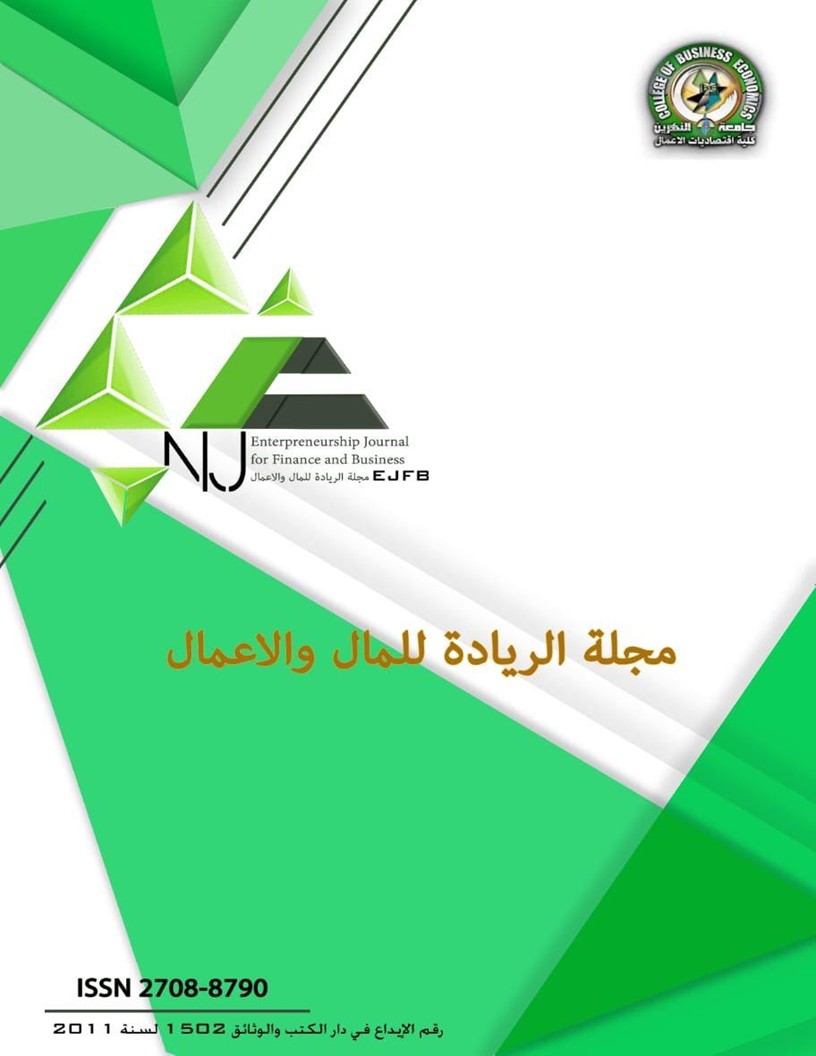Abstract
The study aims to shed light on the types of risks associated with the use of information technology in the audit process that face the external auditor, and to demonstrate the impact of these risks on the quality of the external auditor’s performance through the auditor’s academic and professional qualifications, rules of professional conduct, and consistency with field work standards. The study was based on the hypothesis The main principle is that the external auditor’s identification and evaluation of the risks that he may be exposed to when using modern techniques represented by auditing technology can result in a series of positive results, which in turn enhance the quality of his performance in the auditing process. In order to achieve the objectives of the study and examine and test its sub-hypotheses, it was adopted The study adopted a descriptive analytical approach through constructing and drafting a questionnaire that was distributed to the study sample consisting of a group of external auditors working in auditing offices and companies in the Republic of Iraq, and then analyzing the study data through the use of a number of statistical means and methods.
The study reached a set of conclusions, the most important of which is that the expansion and spread of the use of information technology in many professional works has placed the auditing profession on the need to keep pace with technical developments, as there has become an urgent need for the use of technology by the external auditor in his audit work. Information has provided many opportunities and provided many competitive advantages, but its use is associated with various risks that require the external auditor to recognize and evaluate them in advance to take the necessary precautions and procedures and thus will positively affect the quality of his performance when conducting the audit. The study also recommended the need for auditing offices and companies in Iraq Which uses technology in its work with all policies and procedures that ensure that all auditors are aware of the risks of technology and the extent of its impact on the quality of the external auditor’s performance.
The study reached a set of conclusions, the most important of which is that the expansion and spread of the use of information technology in many professional works has placed the auditing profession on the need to keep pace with technical developments, as there has become an urgent need for the use of technology by the external auditor in his audit work. Information has provided many opportunities and provided many competitive advantages, but its use is associated with various risks that require the external auditor to recognize and evaluate them in advance to take the necessary precautions and procedures and thus will positively affect the quality of his performance when conducting the audit. The study also recommended the need for auditing offices and companies in Iraq Which uses technology in its work with all policies and procedures that ensure that all auditors are aware of the risks of technology and the extent of its impact on the quality of the external auditor’s performance.
Keywords
audit quality
Audit Risks
auditing technology
external Auditor
Information technology
quality of auditor performance.
Abstract
تهدف الدراسة الى تسليط الضوء على أنواع المخاطر المرتبطة باستخدام تكنولوجيا المعلومات في العملية التدقيقية و التي تواجه المدقق الخارجي، وبيان اثر هذه المخاطر على جودة أداء المدقق الخارجي من خلال مؤهلات المدقق الاكاديمية والمهنية وقواعد السلوك المهني والانسجام مع معايير العمل الميداني، وقد استندت الدراسة الى فرضية رئيسية مفادها ان قيام المدقق الخارجي بتحديد وتقييم المخاطر التي من الممكن ان يتعرض لها عند استخدامه للتقنيات الحديثة والمتمثلة بتكنولوجيا التدقيق يمكن ان يترتب عليه سلسلة من النتائج الإيجابية والتي بدورها تعزز من جودة أدائه في العملية التدقيقية، ومن اجل تحقيق اهداف الدراسة وفحص واختبار فرضياتها الفرعية تبنت الدراسة المنهج الوصفي التحليلي من خلال بناء وصياغة استمارة استبيان تم توزيعها على عينة الدراسة المتكونة من مجموعة من المدققين الخارجيين العاملين في مكاتب وشركات تدقيق الحسابات في جمهورية العراق ومن ثم تحليل بيانات الدراسة من خلال استخدام عدد من الوسائل والأساليب الإحصائية.
ولقد توصلت الدراسة الى مجموعة من الاستنتاجات من أهمها هي ان التوسع والانتشار لاستخدام تكنولوجيا المعلومات في كثير من الاعمال المهنية وضعت مهنة تدقيق الحسابات الى ضرورة مواكبة التطورات التقنية حيث اصبحت هناك ضرورة ملحة لاستخدام التكنولوجيا من قبل المدقق الخارجي في عمله التدقيقي. وعلى الرغم من ان تكنولوجيا المعلومات اتاحت العديد من الفرص وقدمت العديد من المميزات التنافسية إلا ان استخدامها يرتبط بمخاطر متنوعة تستوجب من المدقق الخارجي التعرف عليها وتقييمها مسبقاً لاتخاذ الاحتياطات والإجراءات الازمة وبالتالي سوف يؤثر ايجابياً على جودة ادائه عند قيامه بعملية التدقيق، كما اوصت الدراسة بضرورة قيام مكاتب وشركات التدقيق في العراق والتي تستخدم التكنولوجيا في عملها بكافة السياسات والإجراءات التي تكفل معرفة جميع مدققي الحسابات بمخاطر التكنولوجيا ومدى اثرها على جودة أداء المدقق الخارجي
ولقد توصلت الدراسة الى مجموعة من الاستنتاجات من أهمها هي ان التوسع والانتشار لاستخدام تكنولوجيا المعلومات في كثير من الاعمال المهنية وضعت مهنة تدقيق الحسابات الى ضرورة مواكبة التطورات التقنية حيث اصبحت هناك ضرورة ملحة لاستخدام التكنولوجيا من قبل المدقق الخارجي في عمله التدقيقي. وعلى الرغم من ان تكنولوجيا المعلومات اتاحت العديد من الفرص وقدمت العديد من المميزات التنافسية إلا ان استخدامها يرتبط بمخاطر متنوعة تستوجب من المدقق الخارجي التعرف عليها وتقييمها مسبقاً لاتخاذ الاحتياطات والإجراءات الازمة وبالتالي سوف يؤثر ايجابياً على جودة ادائه عند قيامه بعملية التدقيق، كما اوصت الدراسة بضرورة قيام مكاتب وشركات التدقيق في العراق والتي تستخدم التكنولوجيا في عملها بكافة السياسات والإجراءات التي تكفل معرفة جميع مدققي الحسابات بمخاطر التكنولوجيا ومدى اثرها على جودة أداء المدقق الخارجي
Keywords
تقنية المعلومات، تقنية التدقيق، المدقق الخارجي، جودة التدقيق، مخاطر التدقيق، جودة أداء المدقق
